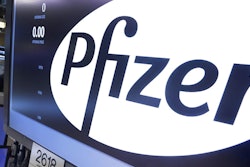
 Glenn Jones
Glenn JonesAs manufacturers compete in a global marketplace where demand signals are often volatile, increasingly dispersed, and critical to efficient operation, the need for more effective demand planning looms ever larger. It’s fair to say that many struggle with the task. In an article from noted supply chain consultant Lori Cecere comments on both the frustration with demand planning and its importance: “After two decades of process and technology refinement, excellence in demand management still eludes supply chain teams. In fact, it is the supply chain planning application with the greatest gap between performance and satisfaction. At the same time, it’s the application with the greatest planned future spending.”
The general perception of planning predisposes those involved to expect less than satisfactory results; forecasting is typically seen as always wrong, obsolete upon its completion, and ultimately reactive to events “on the ground.” Yet the investment manufacturers are making in demand planning belies that belief. Among other things, advances in technology are making demand planning more science than art; of course, the biggest carrot is that increases in demand forecast accuracy typically accrue directly to the bottom line.
Manufacturers know that better demand planning improves efficiency and profitability. The question is how to go about it.
Best Practices
There are different techniques to employ for effective demand planning. Two are longstanding; one is emerging rapidly.
The first involves collaboration. Collect what your customers think demand is for a product. This can be gathered from channel partners. If a manufacturer is doing direct sales, it can be gleaned from account managers and sales teams, either communicated directly or through CRM systems. The second technique subjects historical data to statistical modeling. This provides a different perspective than collaborative information, giving demand planners comparative data from which to build a consensus forecast.
These techniques have been used for many years. As Gartner noted in research that surveyed supply chain experts across a range of manufacturing organizations, defining the balance between statistical modeling and collaborative forecasting “helps improve accountability for the forecast and enables continuous improvement across the organization.” However, even with this balance defined, demand planning after these steps remains a kind of art, whose value ultimately rests on the genius of the demand planner. An element of subjectivity remains, with all that implies.
The third technique — the application of analytics and machine learning to demand forecast data — is moving the discipline more towards objective conclusions, producing consensus forecasts automatically, and predicting demand more accurately. This is the real revolution in manufacturing demand planning.
Technology has advanced to a point where demand planning platforms and systems can leverage their greater capabilities to realize next-generation planning. This enables manufacturers to prepare for shifts in demand whether they are massive (e.g., impacted by natural disasters) or smaller-scale daily occurrences. This takes demand planning to new levels of performance, where the gap manufacturers have historically noted between performance and satisfaction will narrow dramatically.
Five Imperatives
There are five imperatives for demand planning to reach this new level of performance:
- Continuous planning. Planning needs to be continuous, not batch-oriented or cycled. Legacy planning processes and systems were designed when computing power was low and couldn’t easily handle streaming information, so it was batched and run in cycles. Demand starts at a local level and propagates up to a global view. For most organizations today, all the processes involved in this are batch in nature, and there is latency built into it. This is problematic. Where daily, weekly, and monthly kinds of planning cycles are batched, by the time the demand signal gets propagated up to a global level or reflects into the supply cycle, it can take days, weeks, and sometimes months to get the information or a change in the demand propagated. So demand planning needs to be a continuous function, and continuous planning means that plans are never done. Planning becomes a continuum. Manufacturers refine planning activities and execute or act on the new information that streams to them on an ongoing basis.
- Anticipating the unpredictable. Demand planning should not confuse the unforeseeable with the unforeseen; rather, it needs to be smart. If we know that forecasts are always going to be off, why do we forecast a number? Why not have a range, a confidence level, and prepare for multiple possible outcomes? Companies still need to plan around the most likely case — a foreseeable event — but also prepare for those events that are unpredictable that could impact demand.
- Dynamic granularity by time horizon. One rule of forecasting is that it is easier to plan in the short term than in the longer term. You generally know what you’re doing now, and will do for the rest of the day. You may know what you’ll do this week, but next week and next month are more difficult propositions. The closer you get to the time horizon, the easier it is to plan. Further, it’s easier to plan at an aggregate level than at a more detailed one. Employing dynamic granularity by time horizon means always doing telescopic planning: the closer the time horizon, the more granular the plans and the farther the time horizon, the more aggregate the plans. Such an approach integrates long- and short-term planning, telescoping to “continuously recalibrate” the plan as data streams in dynamically.
- Providing users a consumer-grade experience. For the last several decades there has been a huge gap between how consumer and business applications are developed; as applications have become a ubiquitous part of daily lives, that gap must close. Planners in manufacturing organizations must have their expectations met for the speed of response and intuitive experience they’ve come to know via consumer applications. The user experience will be modeled on platforms such as Google, Facebook, and Amazon, where automatic segmenting of analytic problems both speeds and drives prescriptive resolution.
- Leveraging the Internet of Things (IoT) for automated sensing, shaping, and responding. As the IoT proliferates, the automation of the data collection combined with platforms capable of storing very large amounts of data and processing it rapidly improves planning dramatically. The connectivity of Internet-enabled devices provides feedback at unprecedented levels of granularity, in real time, enabling supply chains to sense and shape supply and demand and respond to needs as they occur. As Gartner noted in its research, “Companies that utilize these capabilities as part of their demand planning processes significantly improve their forecast accuracy.”
Besides, as noted above, as demand forecast accuracy improves, so too does profitability and organizational efficiency.
Glenn Jones is Executive Vice President of Product Strategy at Steelwedge.






















